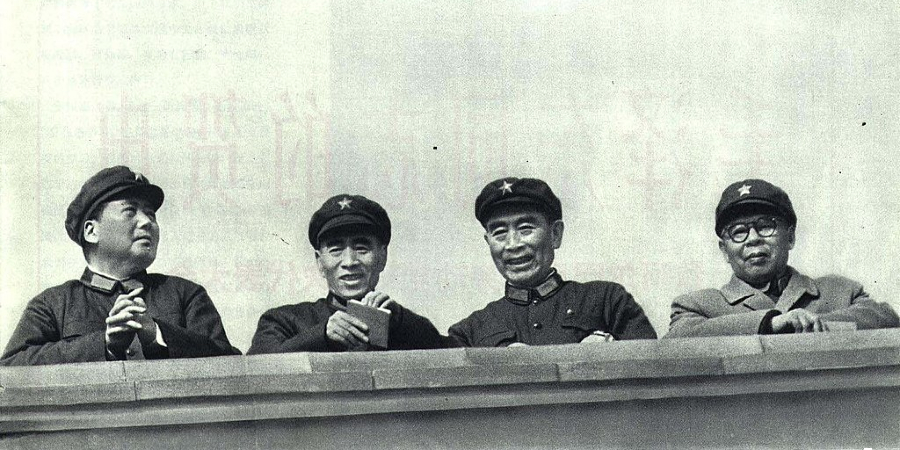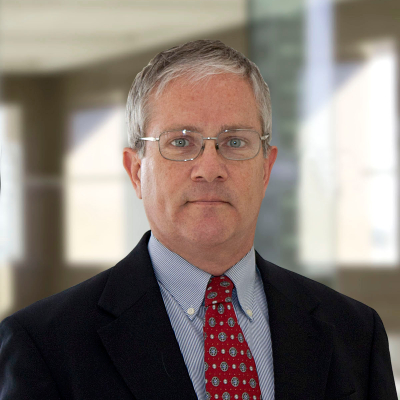Wuhan, From the Cultural Revolution to COVID-19
Four lessons about what the history of the province where the coronavirus emerged tells us about the Chinese Communist Party.

Published by The Lawfare Institute
in Cooperation With

Editor’s Note: Wuhan is now known as ground zero for the coronavirus, but 50 years ago it was also at the center of China’s disastrous Cultural Revolution. Rand Corp.’s Andrew Scobell draws parallels between then and now, highlighting both the high levels of uncertainty and how the Chinese Communist Party, as before, remains firmly in control.
Daniel Byman
***
Fifty-three years ago this month, the People’s Republic of China was in the midst of the tumultuous Great Proletarian Cultural Revolution, and Wuhan was ground zero for murderous pitched battles between armed factions in the streets of cities across the country.
In 2020 Wuhan has once again taken center stage as the epicenter of a contagion sweeping not just China but the world. But this is not the 1960s, when China was intent on fomenting global revolution; this time the export is a virulent pandemic and the transmission across borders is unintentional.
There are some striking parallels and similarities between the notoriety of this central Chinese city then and now. In both cases, the situation in Wuhan epitomizes the wobbly, secretive and insecure side of the Chinese Communist Party (CCP) and underscores the resilient fundamentals of the regime despite crises, many of which are of its own making or at least exacerbated by its missteps and miscues. The pace and duration of policies—domestic and foreign—are difficult to predict, but one constant is that Beijing’s bold rhetoric, particularly on foreign policy, invariably does not get fully translated into action. These trends demonstrate some consistent patterns in the CCP’s behavior.
First, the CCP is paranoid and secretive, and it fears the free flow of information. Then and now, the Chinese government has created confusion about the facts. The CCP has a firm grip on the media and carefully controls—or even completely blocks—reportage about disasters. In 1967, Wuhan was host to the most serious episode of mass violence in the Cultural Revolution, which the late sinologist Roderick MacFarquhar has called the “mother of [all Chinese] mass movements.” Mao Zedong launched the Cultural Revolution in 1966 when he called upon China’s youth to rebel against authority and reenergize the country’s revolution. Students across China marched out of classes at their schools and universities, formed paramilitary groups, labeled themselves Red Guards, and strove to demonstrate their absolute loyalty to “Chairman Mao.” These efforts quickly became highly competitive and escalated into intense rivalries among Red Guard groups that included alliances with rival militias, raids on local armories, and pitched battles on the streets of China’s cities and towns. The most serious violence occurred in Wuhan, where rival armed groups were incited by national-level political leaders vying for influence. In mid-1967, Beijing dispatched emissaries to the city attempting to deescalate the crisis in Wuhan, but at the time, neither local armed factions nor outside observers knew that Mao was located literally in the eye of the Wuhan storm—sheltering in a city guesthouse—as chaos and violence swirled all around him. Indeed, Mao’s presence at this turning point did not become known to many people inside or outside of China until many years later.
Fast-forward to mid-2020, when neither Chinese citizens nor outside observers know very much about the genesis of the deadly novel coronavirus beyond that it first emerged in Wuhan in late 2019 and then spread across China and the rest of the world during the first six months of 2020. Chinese authorities have been extremely secretive and refused to share critical information with other governments and the World Health Organization (WHO). And there is little indication that the authorities will be more forthcoming with information in the coming months or years. Instead of transparency and a spirit of cooperation, the Chinese people and the world have been subjected to baseless rumors and fantastical conspiracy theories. Rival narratives claim the virus escaped from a Wuhan biological research laboratory with inadequate safety protocols or, even more implausibly, that it was spread by the U.S. Army. While the most plausible explanation is still that the virus originated in a municipal “wet market,” in the absence of full transparency these rumors spread and mutated. Moreover, these rumors fuel distrust and suspicion between citizens and their governments and between different peoples and governments, which has poisoned international cooperation efforts to counter the virus.
Just as the full facts of the Wuhan Incident of 1967 took decades to come out, it appears that a complete picture of the origins and spread of the coronavirus may not be known for many years and probably decades. Even half a century later, free and open discussion about and unfettered research on the Cultural Revolution is not yet possible in China. Nevertheless, in 2020 it is more difficult for the CCP to cover up incompetence and scandal. The coercive apparatus and censors could not prevent Li Wenliang, a physician at the Wuhan Central Hospital, from getting word out about the pandemic. He shared information about the emergence of the virus with a group of friends and the word spread. Although the authorities tried to silence him, Li refused to be cowed and bravely helped raise the alarm. His actions quickly turned the whistleblower of Wuhan into an authentic Chinese hero and, unfortunately, eventually a “'martyr.” Decades after the Cultural Revolution, China remains in the grip of a paranoid ruling regime that continues to lie at home and abroad because it fears the reaction of its own people when they learn the truth.
Second, the CCP can maintain control even when the country is shaken to the core. In 1967, when China was convulsed by mass violence and brought to the brink of civil war, the People’s Liberation Army took over the governance of counties, municipalities and provinces across China because civilian structures had ceased to function. But while the country was effectively under military rule at the subnational level, at the national level the CCP remained in overall control with Mao Zedong as supreme leader.
In 2020, the CCP’s response to the coronavirus has raised serious questions about its competence to deal with a public health crisis. The authorities seem to have an effective system in place, at least on paper, and their experience dealing with prior epidemics—SARS, avian flu, and the like—should have augured well for a capable response. Yet the system did not work well: The response was bungled, information was suppressed, and whistleblowers were silenced and persecuted. Chinese citizens expressed outrage at the government’s policies with an intensity not seen in many years.
These passionate contemporary expressions of public disaffection almost certainly do not endanger CCP rule. As with other instances of popular outrage, the focus has tended to be on local officials, and even when it is not, senior leaders are skilled at scapegoating subordinates. In 1967 and 2020, neither the CCP as an institution nor the paramount leader himself takes the blame. Any public judgment from the party will take a decade or more, and even then will likely equivocate, as did the landmark “Resolution on Certain Questions on the History of Our Party Since the Founding of the People’s Republic of China” issued by the CCP in 1981. It is exceedingly rare for the CCP to admit to making a mistake. Washington should not expect Beijing to come clean on the origins of the coronavirus or to openly admit to mistakes in its response to the pandemic.
Third, China’s future course is impossible to predict—the country has experienced all manner of surprising plot twists and turns during the past seven decades. One certainty is that there is great uncertainty about the extent of the aftershocks that might lie ahead. Wuhan seemed an unlikely focal point for the political chaos roiling China in 1967 and at the time the incident had unknowable implications for the course of the Cultural Revolution. The political movement continued to convulse China for another nine years, killing an estimated 1.5 million Chinese and traumatizing millions more. But this Mao-instigated madness did not prevent China from pursuing rapprochement with its ostensive ideological adversary, the United States, only four years later. In just over a decade—a mere two years after Mao’s death—China was able to pivot from permanent revolution to reform and opening to the outside world.
In the summer of 2020, meanwhile, it is unclear whether Wuhan and China more broadly are well on the road to recovery or—with a resurgence of new cases in Beijing and elsewhere—remain a de facto Petri dish with fertile ground for subsequent waves of the coronavirus. At present, China’s paramount leader, Xi Jinping, seems firmly ensconced in power and poised to extend his tenure beyond March 2023 when his current term as head of state ends. Whether the CCP’s campaign against the coronavirus will ultimately be judged a success or a failure may or may not be a factor in Xi’s political future. The CCP can control the official narrative and shape the popular narrative. Part of this narrative is to depict China’s communist rulers as competent, proactive and forward-leaning global leaders. State-controlled media can make the regime’s experience with the coronavirus look swift and decisive when compared with the delayed and erratic actions of many other governments around the world. Additionally, state-controlled media have skillfully portrayed China as working hard to help other countries by shipping personal protective equipment and COVID-19 test kits, and have broadcast praise by foreign leaders for China’s performance at home and contributions abroad.
In the late 1960s, a political cataclysm in Wuhan could shake China to its core but largely leave the world beyond China’s borders practically untouched. Except as an inspiration for leftist radicals espousing revolution in countries across the globe, five decades ago China was largely sealed off from the rest of the world. In 2020, by contrast, the coronavirus originating in Wuhan affected people far beyond China, traveling at the speed of globalization to infect millions and kill hundreds of thousands around the world. The isolation that previously insulated the rest of the world from the unpredictable effects of China’s domestic crises has been unmade by the supply chains, trade networks and business ties that have facilitated its rise. Yet, forecasting the medium- and long-term fallout from the coronavirus on China’s internal affairs and its foreign relations is fraught.
Fourth, Beijing focuses more on keeping up appearances than on taking substantive action. Deeds often do not match words where the CCP is concerned. Rhetorically, Beijing insists that China is an integral part of what its modern propaganda machine describes as a global “community of shared future for mankind.” To those beyond the borders of China, this verbiage rings hollow because China is more focused on rhetorical flourishes and one-off gestures of support—so-called “mask diplomacy”—than serious and sustained cooperation or even the sharing of pandemic information with other countries and the WHO. But empty rhetoric unsupported by actual deeds is nothing new for China. Fifty-three years ago, China vocally promoted world revolution and militant support for the developing world but largely failed to deliver on these pledges. While Beijing’s support for Hanoi during the Vietnam War was real, outside of Asia, actual aid for insurgencies and liberation movements was extremely modest. In 2020, as in 1967, China’s actions speak louder than words.





